
Exploring Pelham's conservation areas and town forests
With 2700 acres of town conservation land and town forests, nature abounds. We love rambling around to see what's happening.
NEWS
Pelham Pathways Inc. Reaches 450 Members

Pelham Pathways is a nonprofit organization dedicated to fostering a vibrant, inclusive community where people of all ages and abilities can connect, explore, and thrive. Our town’s outdoor spaces are more than parks and trails—they’re opportunities to build relationships, promote wellness, and celebrate the natural beauty of Pelham. Through accessible outdoor recreation, multigenerational programs, and conservation efforts, Pelham Pathways unites diverse initiatives under one mission: to create a more active, accessible, and connected community. For information on its activities visit website Pelham Pathways – Connecting Communities and Inspiring Active Outdoor Lives. Sign up as a member and receive monthly updates and information on events.
Flowers in November

American Witch Hazel is a woodland shrub native to New Hampshire. Witch hazel typically grows to 12 to 15 feet tall, and occasionally reaches 20 to 30 feet. Witch Hazel blooms in late fall and spreads its seeds after leaves have fallen. The seed capsule bursts, sending two glossy black seeds flying ten to twenty feet away. This increases the chances of the seeds germinating away from the shrub’s own shade because witch hazel needs some sun to germinate.
Virginia's All Persons Trail Is Open
at
Merriam Farm Conservation Area




About 1 mile of trail that is wheelchair accessible; Audio Tour; Educational Signs; Resting Benches; Boardwalk and Overlook at Beaver Brook
Merriam Farm Conservation Area

Resurfacing parking area



All Persons Trail
Installing cross culverts for drainage
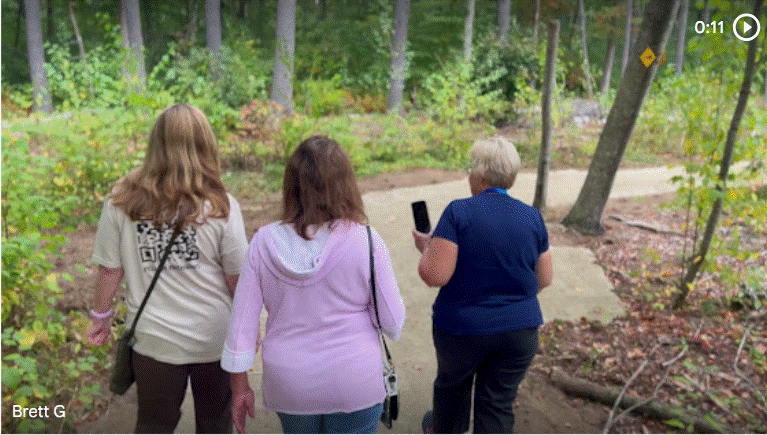
Testing audio tour
.jpg)
Inrstalling benches
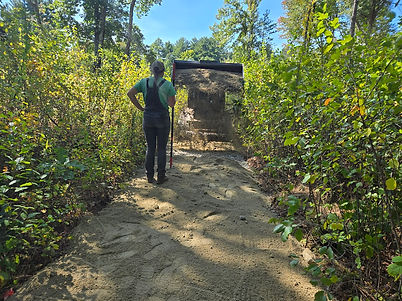
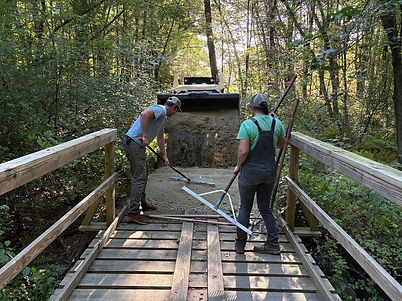
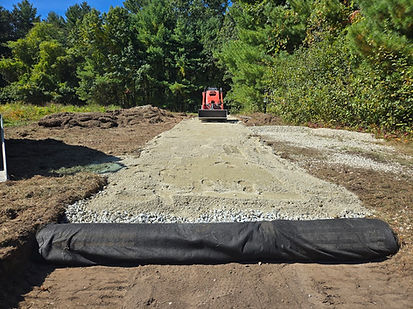

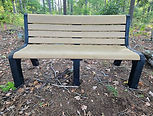

All Persons Trail Under Construction

Step Three
All Persons Trail
Merriam Farm Conservation Area
Build the Trail
After nearly two years of planning, paperwork, and persistence, Pelham Pathways is thrilled to announce that construction of Virginia’s All Persons Trail will begin on September 22!


Step Two
All Persons Trail
Merriam Farm Conservation Area
Hire Hermit Woods Trailbuilders, LLC to build the Trail


_JPG.jpg)
Step One
All Persons Trail
Merriam Farm
Conservation Area
Expand Parking Lot
Is an All Persons Trail Coming to Pelham, NH?
“It’s a perfect summer day in New Hampshire. The trails are dry, and the skies are clear. A walk down any trail could be the start of a new adventure. For outdoor enthusiasts with disabilities, it’s a feeling that can be hard to come by.
Trails designed for wheelchairs and people with varying abilities are few and far between. Information about safety and accessibility features is often limited. And with changing conditions, a trail could be safe one day and unmanageable the next.
The lack of accessible paths could be keeping millions of people from experiencing the outdoors. More than one-in-ten Americans have impaired mobility to the point of “serious difficulty walking or climbing stairs,” according to the Center for Disease Control and Prevention. An outing in nature for these people can be difficult.” Appalachian Mountain Club - All Persons Trail at Mt. Cardigan


"Breaking down these barriers is a vital step in ensuring that the outdoors is truly accessible for all. It is why The Nature Conservancy in New Hampshire has constructed a universally accessible trail at the Manchester Cedar Swamp, with the hopes of introducing this hidden ecological gem to visitors of all abilities and comfort levels. This universal trail offers a tangible opportunity for more people to experience the power of nature, one more affirmation of inclusivity, one more declaration that nature is here for all of us. We are thrilled to provide a trail that is truly inclusive and accessible." Nature Conservancy - Manchester Cedar Swamp All Persons Trail
Northern Pintail

"As winter finally comes to an end in March and our rivers and lakes begin to open up, waterfowl are some of the first birds to return to New Hampshire. One of the earliest of these is the Northern Pintail, a species that sometimes appears in late February and which is increasingly present through the winter in the southern portion of the state." NH Audubon
Quick Fact
The American kestrel is the smallest falcon in North America. American kestrels are legally protected in New Hampshire.

Great Blue Heron

"Often seen hunting near shore in streams and lakes, the statuesque great blue heron is our largest North American heron. When spotted, if you remain still, you might be lucky enough to see the great blue heron use its elegant neck to strike, and tong-like bill to skewer or clamp on to a fish, frog, salamander, crayfish, or snake.
Great blue herons take flight the moment they are disturbed. They have excellent eyesight and hearing. With their six-foot wing span, slow wing beat, and long trailing legs, there's no mistaking the great blue heron's graceful flight and prehistoric appearance."
E. Ann Poole - Hike New England
Quick Fact
Grassland habitats are an increasingly rare site in New Hampshire. More than 70 species of wildlife use these open areas of fields and wildflowers to meet their needs for food, cover, or breeding. Most of today's grasslands require maintenance. If left alone, these habitats will grow back into shrubs and small trees, reverting eventually to forest.

Wood Thrush - Species Focus of Conservation Concern

University of New Hampshire Cooperative Extension
“This large thrush is smaller than a robin, has a spotted breast and brown back, and makes a beautiful, flute-like call that sounds like “ee-oh-layyy.” Wood thrushes nest in mature, deciduous forests with a thick understory, moist soil, and heavy leaf litter on the forest floor. Populations of these birds are declining, partly due to the destruction of forests in their wintering grounds in Mexico. Providing large forest blocks, unfragmented by development, may help sustain this species.”
Quick Fact
Bees are essential for most of the fruit and vegetable crops produced in New England. The value of pollination to agriculture is estimated at more than $200 billion a year worldwide. However, the abundance and diversity of pollinators are declining in landscapes across the United States.


Monarch Monitoring Blitz
The International Monarch Monitoring Blitz is back for its eighth edition from July 26 to August 4. The Blitz provides a unique opportunity for individuals and organizations in Canada, Mexico and the United States to join forces across international borders to safeguard this iconic North American species.
Since monarch butterflies and milkweed populations cover such an extensive portion of North America, the participation of volunteer community scientists is key for furthering our understanding of these species. In the context of climate change, the range of monarchs and milkweed is likely to be impacted, highlighting the need for gathering and analyzing robust, long-term data to better understand population and habitat trends.
For the 10-day period, the Monarch Blitz invites people from across North America to report monarch butterfly sightings, to find milkweed plants and look for monarch eggs, caterpillars and chrysalises. To take part, simply go outdoors and share your monarch and milkweed observations.
Quick Fact
Eastern box turtles reach maturity at 10 to 20 years old and can live to be more than 100 years old. The eastern box turtle is not considered endangered on a national level. However, some states—including Michigan, New Hampshire, Massachusetts, and Connecticut—list the animal as a species of special concern. After successful mating, a female may lay fertile eggs for up to four years.

Connect with Nature at Pelham Veteran’s Memorial Park



Explore 1.5 miles of friendly, easy walking trails and uncover remnants of the area’s rich history, including old stones walls, scenic wetlands and views of Long Pond. The trails feature gentle slopes with minimal elevation, ensuring a comfortable experience for hikers of all abilities.
Quick Fact
The gray fox is found throughout New Hampshire, but it is most commonly found in the southern part of the state. It occasionally climbs a tree to forage for food or to rest. It has a long bushy tail with a black stripe on top and a black tip. The gray fox is smaller than the red fox.

Spring Ephemerals
"As winter loosens the last of its hold on New England and the days grow longer and brighter, look for one of the natural world’s most beautiful heralds of spring: the unfurling blossoms of ephemeral flowers.
Spring ephemerals—herbaceous, perennial flowering plants found in deciduous forests—get their name from their fast-paced lifecycles. They are the early risers of New England’s spring flowers and can only be viewed for a few short weeks before they return to a dormant state.
Between the end of the spring snowmelt and the full leafing of deciduous trees, spring wildflowers manage to bloom and produce seed; the ephemerals have evolved to take advantage of the narrow window during which sunlight directly reaches the forest floor by being among the first to produce leaves and capture the energy of the sun. Most of them also bloom during these few weeks and their blossoms are some of the showiest of New England’s native wildflowers."
Spotting Spring Ephemerals - New England Forestry Foundation New England Forestry Foundation

Early Blooming Tree - Serviceberry



One of the earliest blooming trees in New Hampshire is the Serviceberry. In Pelham’s forests, Serviceberry is blooming now. It is an understory tree that grows in dry wooded areas. The white blossoms open just as the leaves are unfolding. The effect is like a white cloud of blossoms that seem to float in the forest. Spring bees are busy pollinating the blooms.
Update - Hummingbirds are Arriving Early


"Four family members were delighted to witness our first Ruby-throat inspecting the feeder we had just put out hours earlier on our back porch. At least ten days earlier than former years!"
Sighting - Stow, MA
Journey North
https://journeynorth.org/

Journey North is a participatory science program of the University of Wisconsin - Madison Arboretum. Thousands of volunteers across North America contribute observational data that help track wildlife migration and seasonal change. Journey North volunteers track the migration of monarch butterflies; six species of hummingbirds; American robins; common loons; red-winged blackbirds; Baltimore, Bullocks and orchard orioles;
barn swallows; and bald eagles.

Hummingbirds return to New Hampshire at the end of April or early May.

Red-winged Blackbird
Like robins, red-winged blackbirds bring signs of spring. The male’s songs can be heard when there is still snow on the ground. Males return first and set up their breeding territory. His song is accompanied by displays of his red feathers to drive away other males. Females arrive later and generally stay out of sight focusing on nest building, brooding, and raising their young.
Red-winged blackbirds are found in marshes and fields near water sources.

Field Habitat - Severe Decline in Southern New Hampshire

Merriam Farm Conservation Area
The Conservation Commission is required under RSA-36A to inventory natural resources in Pelham. In 2022, Nashua Regional Planning Commission prepare a Natural Resources Inventory for the town. A recommended action is to “actively work to conserve field habitat”. The purpose is to provide habitat for grassland birds such as barn swallows, brown thrashers, meadowlarks, and field sparrows which are on the decline with the loss of fields.
Protected Habitat - "A 16-acre field is currently protected at the Merriam Farm site, a 4-acre field at Cutter Woods, and a 1-acre field is conserved at Wolven Park."
Town of Pelham, NH Natural Resources Inventory
Prepared by the Nashua Regional Planning Commission
2022
Rare Habitat - Merriam Farm Conservation Area
"Grassland habitats are an increasingly rare site in New Hampshire. More than 70 species of wildlife use these open areas of fields and wildflowers to meet their needs for food, cover, or breeding." Grasslands - NEW HAMPSHIRE WILDLIFE ACTION PLAN
Habitat Stewardship Series
Merriam Farm Conservation Area has 16 acres of open field habitat that is managed to maximize wildlife use. An early successional area around the field is maintained and the field is mowed in sections every 3 years.
This rare habitat is unusual for southern New Hampshire because of its large size.


Trails for People and Wildlife
"Hiking, mountain biking, bird watching, and horseback riding are just some of the ways we get outside to enjoy nature and relax. However, even these seemingly low-key activities can have a negative impact on wildlife by reducing their abundance, reproductive success, or even survival."
The purpose of this guide is to help landowners, conservation groups and natural resource professionals develop a thoughtfully located network of well maintained trails that allow people to get outside to enjoy nature while minimizing disturbance to wildlife."
"This guide can be used to decide where best to route new trails or to consider where it is best to maintain, reroute, or decommission existing trails."
Trails for People and Wildlife | State of New Hampshire Fish and Game (nh.gov)
Trail Maps - Nashua Regional Planning Commission

It's official....
The GIS group at Nashua Regional Planning Commission (NRPC) has provided trail mapping services to municipalities for many years. NRPC has professionally GPS’d and created trail maps for all of Pelham’s conservation areas and town forests.
Trail maps can be found in kiosks or online at Trail Maps | Pelham NH (pelhamweb.com).
Pelham has 21.53 miles of hiking multiuse trails.

Five Ways Forests Benefit Human Health
1. Spending time outside improves mental health
2. Taking a walk through the forest can benefit physical health
3. Forests provide oxygen for our lungs
4. Forests purify and provide clean water for our communities
5. Trees help mitigate the effects of climate change
Sleeping Pollinators

"The temperatures are very ‘winter’ right now. I think everyone is yearning for spring, but we need to wait until it is ‘real ‘ spring. A few thoughts on getting ready for warm weather: If the past few years are a guide, we will have warm weather (60s +) for a few days. We’ll want to get out a rake and DO something! Unfortunately, it’s only false spring, and the temps will drop and we’ll have more frosts…yet again. We need to be good neighbors to all the little creatures that are sleeping through the winter. There are caterpillars under the leaves and mulch. There are native bees nesting in the woody flower stalks. One of the many fascinating facts about pollinators is that some caterpillars freeze solid, then defrost in the spring. (Nature is amazing) But we must wait until we have temperatures in the 60s for at least 5 to 10 days.”
Marghi Bean, Chair Pollinator Pathways NH

What is Forest Stewardship?
“Stewardship is the careful and responsible management of land. It is the desire to leave the land better than you found it. Good stewards of the land consider water quality, aesthetics, fish and wildlife habitat, timber, recreation, soils, wetlands and other unique places, rare plants and unique natural communities, forest protection, and cultural and historical features.
Since 1925 UNH Cooperative Extension has worked in partnership with the Division of Forests and Lands to help citizens and landowners learn about and care for New Hampshire's forests, trees, wildlife and habitats. To learn more visit the UNH Extension website.”
NH Division of Forests and Lands
How NH Conservation Commissions protect land
A Conservation Commission is authorized by RSA 36-A:4 to acquire land or conservation easements in land for conservation purposes in the name of the city or town. A Conservation Commission is formed “for the proper utilization and protection of the natural resources and for the protection of watershed resources of said city or town.”
New Hampshire Association of Conservation Commissions

Beaver Pond at the Gumpas Pond Conservation Area Recovering

Sometime on Monday or Tuesday, March 4th or 5th, 2024, three (3) beaver dams were damaged at the Gumpas Pond Conservation Area, successfully draining a large beaver pond near the blue loop trail. This beaver pond is a mapped wetland and approximately 15 acres in size. The beaver pond contained several active beaver lodges and normally is filled with wildlife. The blue loop trail that circles this beaver pond is a popular spot for nature photographers, group educational events and classes taught by Matt Tarr, UNH Wildlife Specialist.
This picture was taken on March 13, 2024. The beaver dam is being quickly rebuilt by industrious beavers and the pond is filling with water again.

Forest Journal: Doctor’s Prescription Take A Hike
Part of a new collaboration between Concord Hospital and the Society for the Protection of New Hampshire Forests, medical professionals are helping spread the word about the role that forests and hiking play in keeping our bodies and brains healthy.
Society for the Protection of New Hampshire Forests
When winter snow and ice return to the forest...
"Trunks of white birch aka “paper birch” famously bend under the weight of ice and may remain bent forever.
Some cone-bearing trees like pine, spruce and hemlocks fold their branches to shrug off snow. Conifers limbs tend to flex to release snow loads and spring back upward.
Other trees like red and white oaks or sugar maples stand rigid and inflexible. Broad-beamed mature oaks and maples exhibit a lower scaffold of heavy stout branches, an architecture less prone to breaking."
Society for Protection of New Hampshire Forests - 12/9/2019

New England Cottontail
Not your backyard bunnie...
“New Hampshire’s only native rabbit, The New England cottontail (Sylvilagus transitionalis), has lived in its native region for thousands of years. As recently as the 1960s, these rabbits were found throughout southern and central New Hampshire. Today, only a few remnant populations, occupying less than 25% of their historic range, remain in the state. These populations occur in the Seacoast and Merrimack Valley regions."
"The New England cottontail has specific habitat needs, relying on dense thickets for protection from predators. New England cottontails generally don't go farther than about 16 feet from protective cover of thickets and brush to feed, and habitat blocks of at least 25 acres are necessary for local populations to survive."
University of New Hampshire

Photo by U.S. Fish and Wildlife Service Northeast Region
Heading 5
U.S.D.A. Changes Hardiness Zone Map
In November, 2023, the U.S. Department of Agriculture changed its hardiness zone map. The hardiness zone map provides guidance on the survival of plants in a certain area. In 2009, the hardiness zone map showed Pelham in Zone 5b. Now Pelham is in Zone 6a and closely bordering Zone 6b.
“Winters are warming faster than other seasons, and faster in New Hampshire than in other parts of the U.S.” NH Public Radio – 11/22/2023.

Fly Agaric Mushroom

“The yellow orange fly agaric (Amanita muscaria var. Formosa) is common in the Northeast, especially where conifers grow. While this mushroom is often a bright red color in much of its range – in the western United States and Europe – in the Northeast, it is typically orange or yellow in the Northeast.” (Northern Woodlands – August 2023)
Christmas card displaying the hanging of Amanita muscaria on a door. U.S. Forest Service


American Wintergreen
Tucked in leaves and pine needles on the forest floor of Pelham’s town forests and conservation areas you will find the American Wintergreen growing. Also known as Eastern Teaberry, Checkerberry and Boxberry, this native plant has small bell-shaped white flowers that bloom in late spring/early summer and produce small red berries in late fall. The plant prefers the acidic soil of pine and hardwood forests.


Merriam Farm Conservation Area
Newly mowed field at Merriam Farm Conservation Area provides hunting opportunities for Red-Tailed Hawks. These hawks have keen eyesight that is eight times better than a human’s. In flight, they can spy a mouse on the ground from 100 feet in the air.
Moose Pond Conservation Area



Calitri Family
Conservation Area
Merriam Farm
Conservation
Area




Wolven
Conservation
Area
Merriam Cutter Conservation Area



Fall Leaves
"Most of the year, these leaves are green because of the chlorophyll they use to absorb energy from sunlight during photosynthesis. The leaves convert the energy into sugars to feed the tree.
As the season changes, temperatures drop and days get shorter. Trees get less direct sunlight, and the chlorophyll in the leaves breaks down.
The lack of chlorophyll reveals yellow and orange pigments that were already in the leaves but masked during the warmer months. Darker red leaves are the result of a chemical change: Sugars that can get trapped in the leaves produce new pigments (called anthocyanins) that weren’t part of the leaf in the growing season. Some trees, like oaks and dogwoods, are likely to produce red leaves."
The Smithsonian Institution
Trees turning color at Gumpas Pond Conservation Area


If the summer is cool and wet, swamp maples are the first trees to turn color in the fall.

Why are vernal pools important?

"Fish are top predators in wetlands, but they can’t survive in pools that dry out. As a result, vernal pools provide key breeding habitat for amphibians whose tadpoles and larvae are especially vulnerable to fish predation: wood frogs, spotted, blue-spotted, and Jefferson’s salamanders.
In the spring, these amphibians migrate from nearby woodlands to vernal pools – where they breed and deposit their eggs. Once hatched, tadpoles and larvae develop quickly into young frogs and salamanders that must leave the wetland before it dries up – by early or mid-summer for wood frogs, or by late summer or early autumn for salamanders.
Other species besides amphibians use vernal pools as habitat. Fairy shrimp are small crustaceans that require vernal pools for breeding. Spotted and Blanding’s turtles, great blue herons, raccoons and predatory insects travel to vernal pools to feed on amphibian eggs, tadpoles, insects and crustaceans in the pools."
New Hampshire Wildlife Action Plan
Peepers
Why are there spring peepers in the fall?
“After taking a quiet summer respite, some peepers again find their voice. Their solitary songs resonate from the deep woods, intermingled with the chirps of crickets. Fall peepers can be heard from about late July until well after the leaves have fallen.”
MICHAEL J. CADUTO
Burlington Free Press – September 25, 2016
About the size of a quarter, spring peepers are the smallest frog found in New Hampshire.

Water Lilies
The floating leaves of water lilies provide many benefits to an aquatic ecosystem. They support insects and snails and provide food and shelter for juvenile fish. Larger fish lurk at leaf edges hunting fish, frogs and insects. Frogs and turtles bask in summer sun on top of the "floating rafts". Dragonflies and damselflies find a large surface to dry their delicate transparent wings. The leaves cool the water and bees, flies, and beetles visit the flowers.

Gumpas Pond Conservation Area

Cardinal Flower


Cardinal flower is a bright red-colored native wildflower that grows in marshes, stream banks and moist areas of forests. It blooms in late summer (July to September).
Cardinal Flower depends on hummingbirds, which feed on the nectar, for pollination. Its common name refers to the bright red robes worn by Roman Catholic cardinals. Although a common wildflower, it is in danger from over picking.
Cardinal Flowers grow in Pelham's conservation areas and town forests.
Drink Your Tea-
Eastern Towhee
Eastern towhees forage for seeds, insects, and fruit on the ground or on low shrubs. The birds scratch the ground to uncover food. It has a thick beak that helps it break open seeds. It's call sounds like it's saying “Drink your tea”.
The call of the Eastern towhee can be regularly heard in Pelham's conservation areas.



Misty Morning
Merriam Farm Conservation Area


Polyphemus Moth
Often overlooked, moths can be just as beautiful and interesting as butterflies. The Polyphemus Moth is one of the largest moths in New Hampshire with a wingspan of approximately 5 inches wide. The prominent eyespots on the wings are designed to scare away predators. A moth found in wooded areas, this moth has been spotted on Pelham's conservation areas and town forests.
Dragonfly and Damselfly - NH Audubon


The New England Bluet is one of four damselflies found only in the Northeast. Its entire global range extends from New Jersey to Maine.
“Dragonflies and damselflies are members of an ancient order of insects (Odonata – meaning “toothed ones”) that has been on this planet for 300 million years. For a small northern state, New Hampshire hosts a high diversity of species, with 166 currently recorded. These insects occur in freshwater habitats statewide, from our largest rivers to ponds above treeline in the White Mountains, and the myriad bogs and beaver ponds in between. They spend most of their lives as aquatic nymphs, and in many cases this life stage can be an indicator of high water quality – especially in streams. Dragonflies and damselflies are often colorful and conspicuous, and as a result are also increasingly popular with amateur naturalists.” Dragonflies and Damselflies - NH Audubon

Ferns
There are roughly 75 species of fern in New England, with about a dozen of them common. They grow in the understory of forests, along streams, swamps and the edges of clearings. Ferns spotted on Pelham’s conservation areas and town forests include:
Sensitive Fern
New York Fern
European Royal Fern
Cinnamon Fern
Broad Breech Fern
Interrupted Fern
Hay Scented Fern
Common Bracken
Oak Fern
Lady Fern
Christmas Fern
Wild Columbine


A favorite native spring bloomer, Wild Columbine serves as a valuable nectar source to spring insects and hummingbirds. It grows in open woodlands and craggy outcrops with good drainage.
Mitten Tree - Sassafras

Along Pelham’s forest trails, sometimes clumps of Sassafras can be spotted. Also called the “Mitten Tree”, the leaves resembles mittens – sometimes with one thumb, sometimes with a thumb and equal size pinky finger. Sassafras belongs to the tropical plant family that includes cinnamon and needs full sun to grow to maturity. Open, sunny locations have declined in NH as farmland has reverted to forestland so mature trees are a rare sight.


Turtles
"There are 7 species of turtles that are considered native to New Hampshire. Box turtles are considered native to NH, although no populations (multiple individuals from one site) are known at this time. Some species, such as painted and snapping turtles, are relatively common and widespread across the state. Other species like the Blanding's turtles are becoming increasingly imperiled. Four of the 7 species (Blanding's turtle, spotted turtle, wood turtle, box turtle) were identified as species in greatest need of conservation in the New Hampshire Wildlife Action Plan." New Hampshire Fish and Game Dept.

Turtles sunning themselves on a log at Merriam Cutter Conservation Area. The Blanding's turtle has a highly domed shell and yellow chin and is easily distinguished from the smaller flatter-shelled turtles.
Painted Trillium

Along Pelham's forest trails, you may spot the woodland wildflower called Painted Trillium, Painted Wakerobin or Painted Lady. Trilliums grow in forests on moist soils in deep shade.
Jack-(or Jill)-in-the-pulpit

Jack-in-the-pulpit grows along Pelham’s woodland trails. It has 3 leaves, often mistaken for poison ivy, but the leaves are bigger, wider and the plant is taller than poison ivy. Individual plants are either male or female. The plant needs pollinators to transfer pollen from the males to the females. Its tiny, hidden flowers cannot attract bees or butterflies. Instead, the plant emits a fungus-like odor which attracts fungus gnats that are its primary pollinators.
Ethereal Bird Songs - Peabody Town Forest
Veery
The Veery's call is an ethereal sound that seems to resonate through a hollow metal pipe, but is actually because the Veery has a double voice box and can sing two notes at the same time. This small thrush lives in forests and forages on the understory for insects and fruit. The Veery can be heard in many forested areas, but is often heard at Peabody Town Forest.

Leave No Trace on the Trails
Pelham Clean Water Initiative

Field Habitat

IWolven Conservation Area


Most New Hampshire’s forests are comprised of trees averaging 70 -100 years old. Field habitats with native plants are quickly disappearing with consequences to wildlife. 60 wildlife species require fields, old fields, or young forest as their primary habitat type. Five of Pelham’s town forests have field habitats ranging from 1 acre to 15 acres. To prevent the fields from quickly reverting to forests, fields are mowed every 3 years or so. Doing this allows native flowering plants to flourish while holding back tree growth.
Wood Duck
A beautiful, multi-colored duck that inhabits wetland areas in New Hampshire. This duck nests in tree cavities. Once hunted to almost extinction, efforts to protect the duck and increased use of nesting boxes, has brought the wood duck back from the brink. Once again it is a common sight in beaver ponds and along the edges of streams and rivers. The wood duck has been spotted on Pelham’s conservation areas.



Bird's Foot Violet
Spring violets are flowering now, in fields, forests and even lawns. A distinctive species of violet known as the Bird’s Foot Violet grows in dry, upland sites. The plant gets its name from the "bird's-foot"-shaped leaves. It is pollinated by bees and butterflies.
A threatened plant species in New Hampshire, this violet is known to grow on two of Pelham’s conservation areas.
Wood Anemone
Here Today Gone Tomorrow
Wood Anemone is a delicate wildflower that blooms in the warm spring sun before tree leaves emerge. These slender-stalked plants quiver in the breeze and are also called "Wind Flowers."
As tree leaves expand overhead, less light finds its way to the forest floor. By mid-June, the wood anemone has completed its life cycle and is not seen again until the following spring.

Little Island Pond Conservation Area

Red-Shouldered Hawk
Red-shouldered Hawks are forest dwellers. They live in mature forests bordering wetlands, rivers, marshes, beaver ponds and fields.
Red-shouldered Hawks soar over forests or perch on tree branches. They hunt small mammals, amphibians, and reptiles either from perches or while flying. Their body is 17"-24” long with a wingspan of 37"-43”.
In New Hampshire, the Hawk may be seen during spring and fall migrations.
Early Risers

Sunrise at Merriam Farm Conservation Area

Sweet White Violet

False Hellebore

Trout Lily

Starflower
Spring ephemerals are starting to bloom in Pelham's conservation areas and town forests.
Canada Mayflower - Green Carpet for the Forest Floor



In early spring, Canada Mayflowers emerge on the forest floor creating a thick green carpet. This plant spreads through rhizomes. It grows in Canada and Northern United States. It has a fragrant white flower and red berries that are valuable food source for wildlife.

Rattlesnake Plantain



In the nooks and crannies of Pelham's town forests, Rattlesnake Plantain grows in shady spots on the forest floor. The common name refers to the mottled leaves which resemble a snake's skin. A native, North American wildflower in the orchid family, the plant is an evergreen and flowers in July and August, producing long spikes with clusters of tiny white flowers.
Pelham's Birches

Black Birch

Grey Birch

White Birch

River Birch

Yellow Birch
Eastern Bluebird - Merriam Farm Conservation Area




The Pelham Bluebird Society is installing and maintaining nesting boxes for the Eastern Bluebird at the Merriam Farm Conservation Area. These birds need tree cavities for nesting. In the past, tree cavities were more prevalent, but now old and rotting trees are often removed in a landscaped environment. They need nesting boxes to survive. Eastern Bluebirds eat mostly insects, wild fruit and berries. The adjacent field habitat provides a perfect feeding ground for these birds.
First to Arrive - Hermit Thrush

The hermit thrush is one of North America’s finest songbirds. Male thrushes have a repertoire of 7 to 13 songs. No two birds sing the same song. Males never repeat the same song consecutively.
The hermit thrush is one of the first woodland birds to return to New England in spring. Males arrive in April to establish a territory, which he does by singing and chasing away rivals. Females arrive by May.
Hermit thrushes nest in woodlands and coniferous forests near ponds and meadows.
Rock Stars - Glacial Erratics

Gumpas Pond Conservation Area

Calitri Conservation Area
Approximately 12,000-14,000 years ago, ice covered the White Mountains in sheets that could reach over a mile high. As the ice sheet advanced south, it fractured large boulders from mountain tops. When the ice melted, "glacial boulders." were left behind, often far from their original location.



Early Successional Habitat - Gumpas Pond ConservationArea
Grasslands, shrublands, and young forest habitats (collectively referred to as early-successional habitats) have been declining throughout the Northeast for decades as have the wildlife species associated with them. In 2012, 22 acres of early successional habitat was created on the Gumpas Pond Conservation Area.
Eastern Skunk Cabbage Brings the Heat



One of the first plants to emerge in the spring is Eastern Skunk Cabbage which got its name from a sulphury smell that emits from the plant to attract pollinators. Skunk Cabbage has an ability to produce heat that allows it to emerge and bloom when the ground is frozen. When temperatures are freezing, the flower buds can warm up to 70 degrees which melts the snow around the plant.
Forest Bird - Barred Owl


Moose Pond Conservation Area - Barred Owls are often heard in this conservation area.
Barred Owls are the most common owl in New Hampshire. They live year-round in mixed forests of large trees, often near water. Although they are mostly active at night, they will also call and hunt in the daytime.
Barred Owls hunt from a perch and swoop down in a silent flight to grab prey with their talons. They mostly hunt for mice but will also prey on chipmunks, squirrels, rabbits, grouse, frogs, smaller owls, snakes, insects and occasionally fish.
Christmas Fern - Gumpas Pond Conservation Area



Christmas Fern is a perennial, evergreen fern found in moist, shady habitats in woodlands, on stream banks and rocky slopes. The name is derived from the evergreen fronds, which are still green at Christmas. The fronds lie flat on the ground during the winter months and then become erect in the warmer weather.
Warm Spring Day - Gumpas Pond Conservation Area

View from Boy Scout bench at the blue loop trail

One of many stone walls showing agricultural past

Boy Scout bench overlooking beaver pond

Male and female Hooded Mergansers

View of large beaver pond

Series of beaver ponds
Forest Bird - Pileated Woodpecker



Wolven Conservation Area

Pileated Woodpeckers are so good at making holes in trees, wood chips often fall to the base of the tree.
There is ample evidence that Pileated Woodpeckers inhabit Pelham’s forests.
Merriam Cutter Conservation Area
The Pileated Woodpecker is one of the biggest, most eye-catching forest bird in New Hampshire. It is about the size of a crow, with a bright red crest on its head. Pileated Woodpeckers have a screeching call and a steady, loud drumming sound as they strike at dead trees and fallen logs in search of food. They primarily eat carpenter ants and other insects found inside of dead and dying trees. This woodpecker digs rectangular holes in trees which can be wide and deep.

Pileated Woodpecker Drum

Pileated Woodpecker Call
Brush Piles Attract Wildlife

Wolven Conservation Area
“….any woods-wise naturalist will tell you that the random and chaotic nature of the ungroomed forest floor is nature’s way of expressing beauty.”
"I discovered that if the pile makes good contact with the soil, the woody debris melts away in a few years anyway. And that way, the pile releases valuable nutrients back to the soil. It also provides habitat for all sorts of animals, like insects, salamanders, and mice. Even the smallest creatures need food, cover, and space."
Dave Anderson, Senior Director of Education for the Society for the Protection of New Hampshire Forests.
Listen to NHPR podcast
Something Wild: The beauty of brush piles | New Hampshire Public Radio (nhpr.org)
Thinking Spring Peabody Town Forest

Bird's Foot Violet - Threatened Species in NH

Fringed Polygala or Gaywings blooms in early spring

Wood Anemone - one of the earliest blooming wildflowers in NH

Pink Lady's Slipper - species of special concern in NH
Wolven Conservation Area Mosses Lichens & Fungi
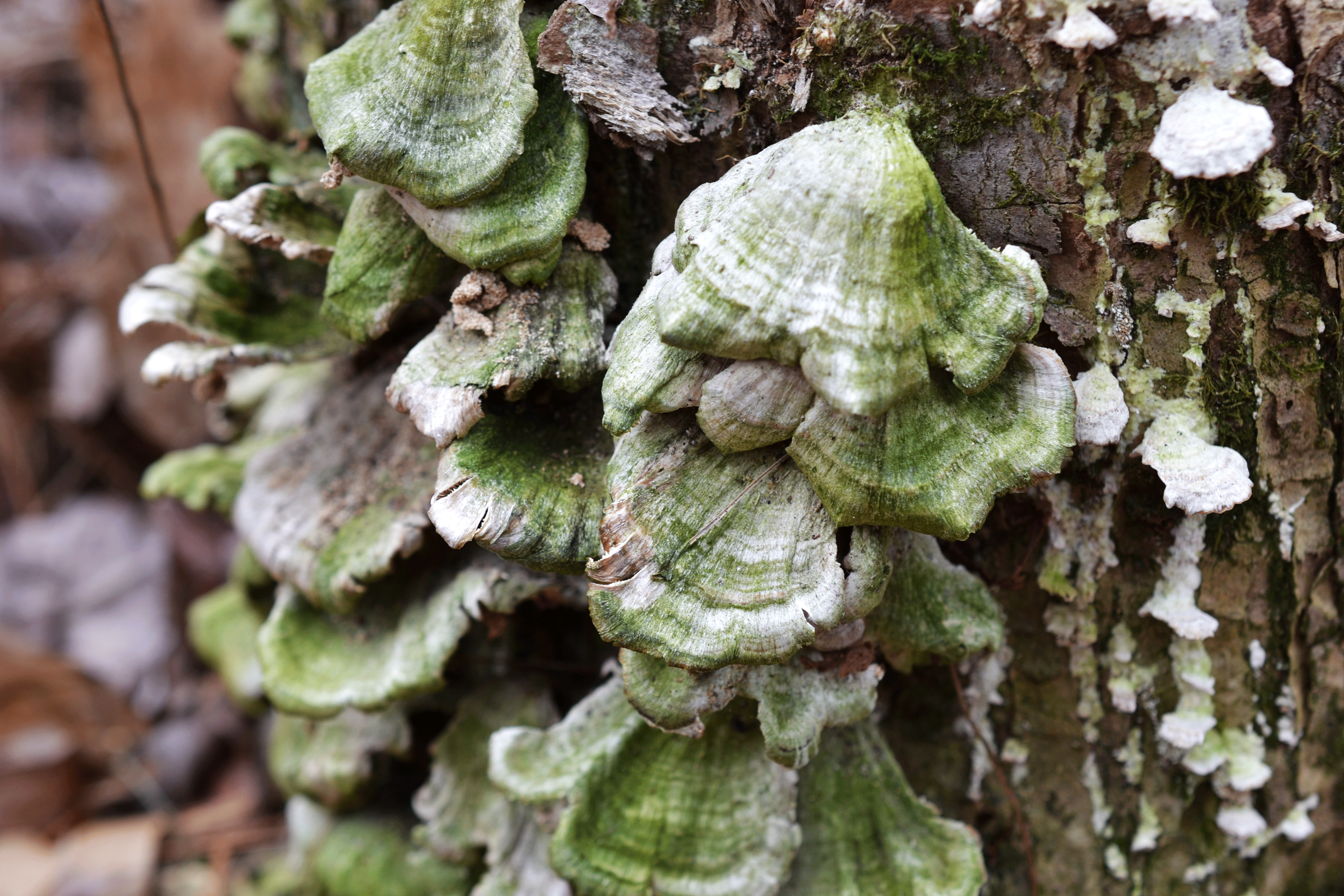
Shelf fungi growing on dead trees.
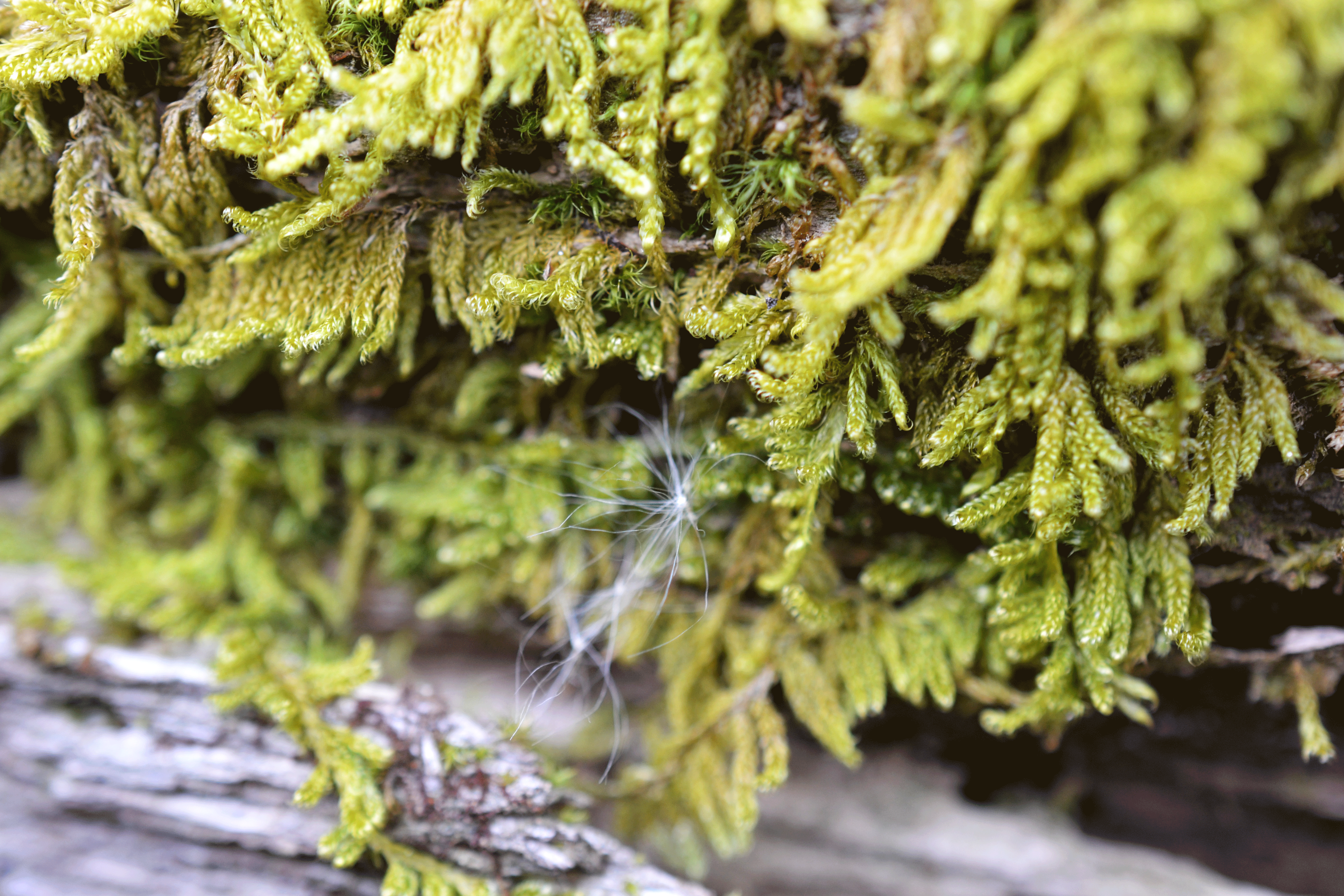
Mosses are ancient plants with no roots. Instead they have rhizoids - small hair like structures that cling to a surface.
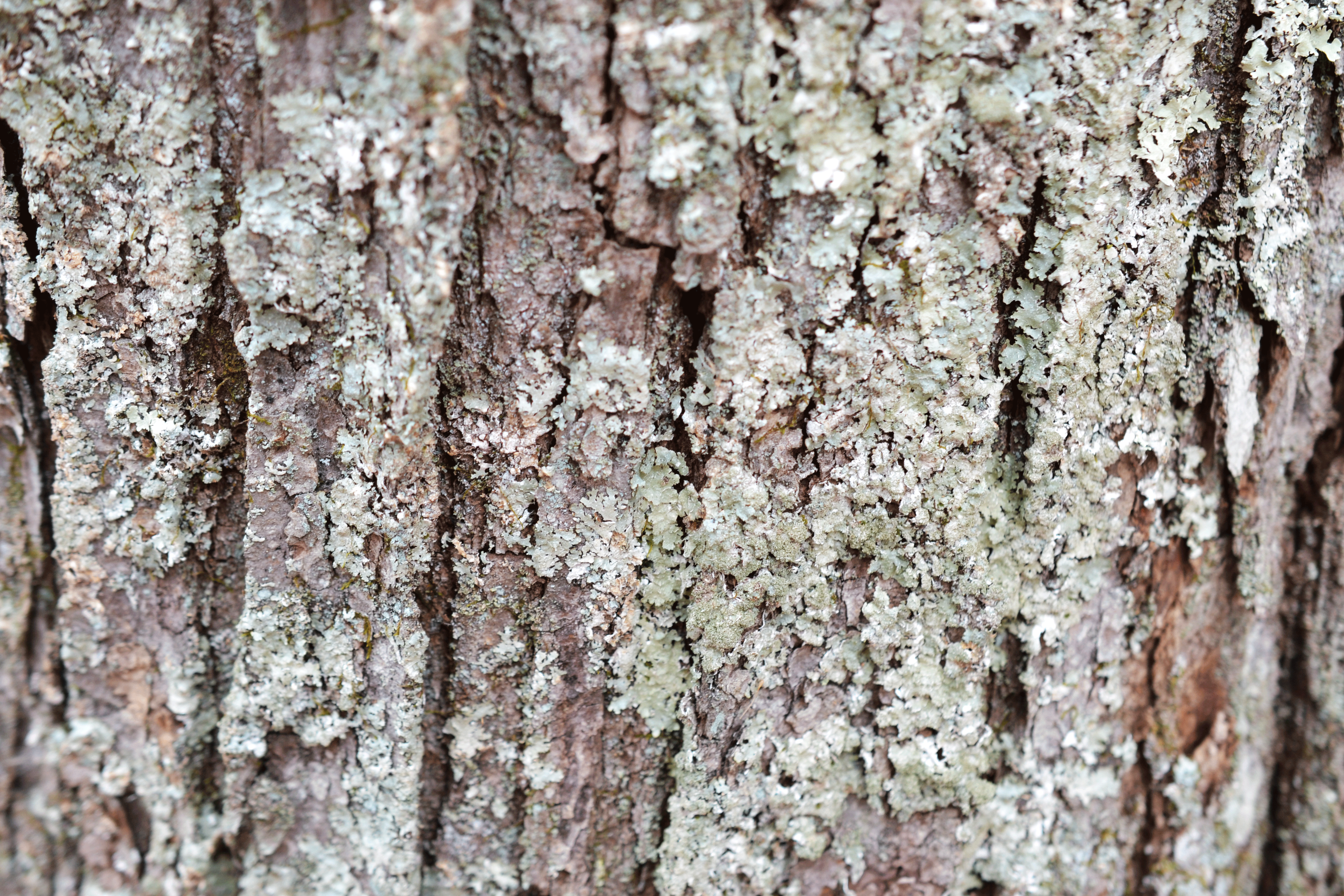
Lichens are often found on tree trunks, branches and twigs. The bark provides a stable place to collect needed sunlight, rainwater and materials from the air. They can grow on healthy trees.
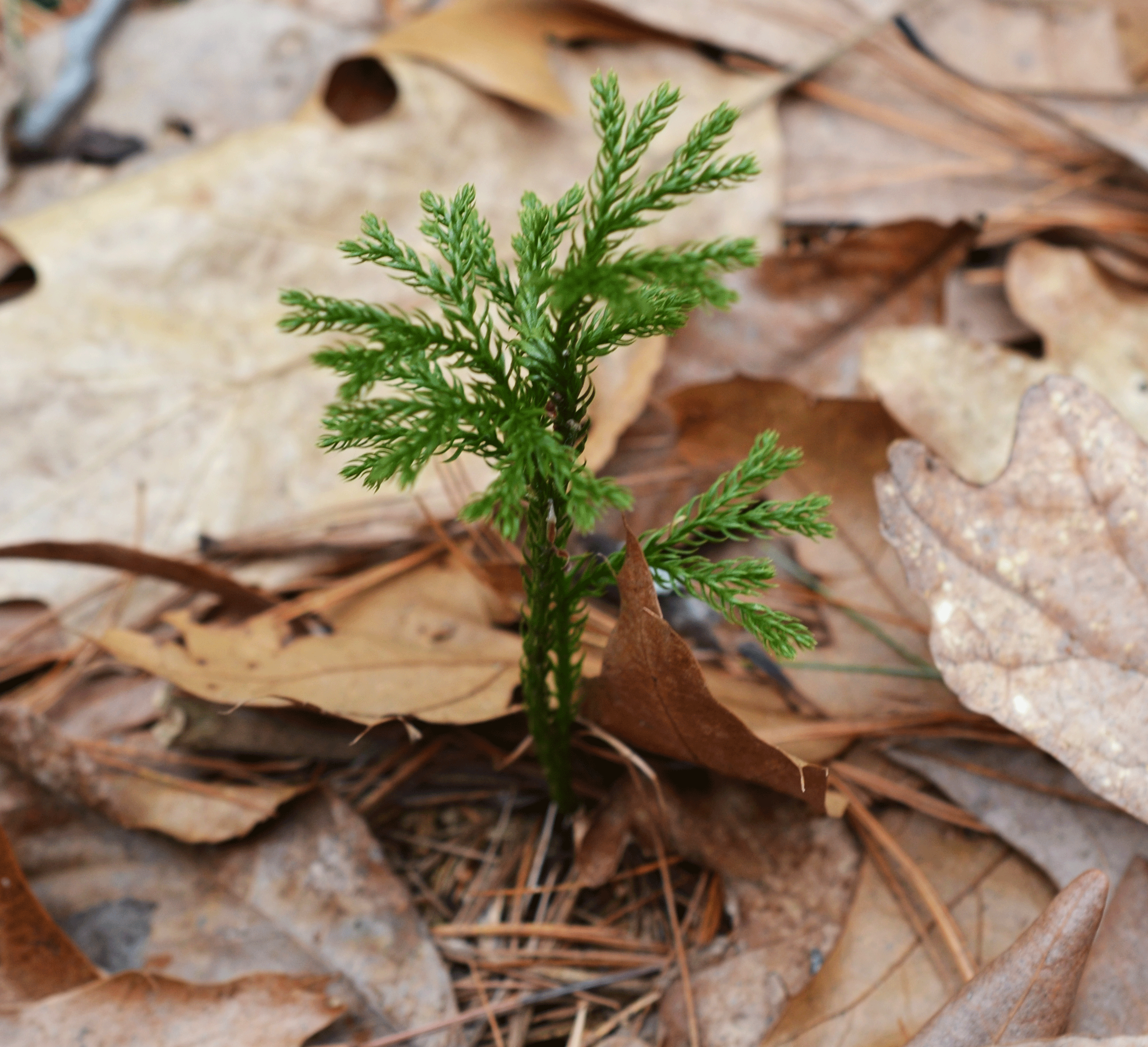
The Princess Pine is actually a clubmoss which is not true a moss, but an ancient relative of ferns and horsetails.
February Walk Cutler Spalding Conservation Area
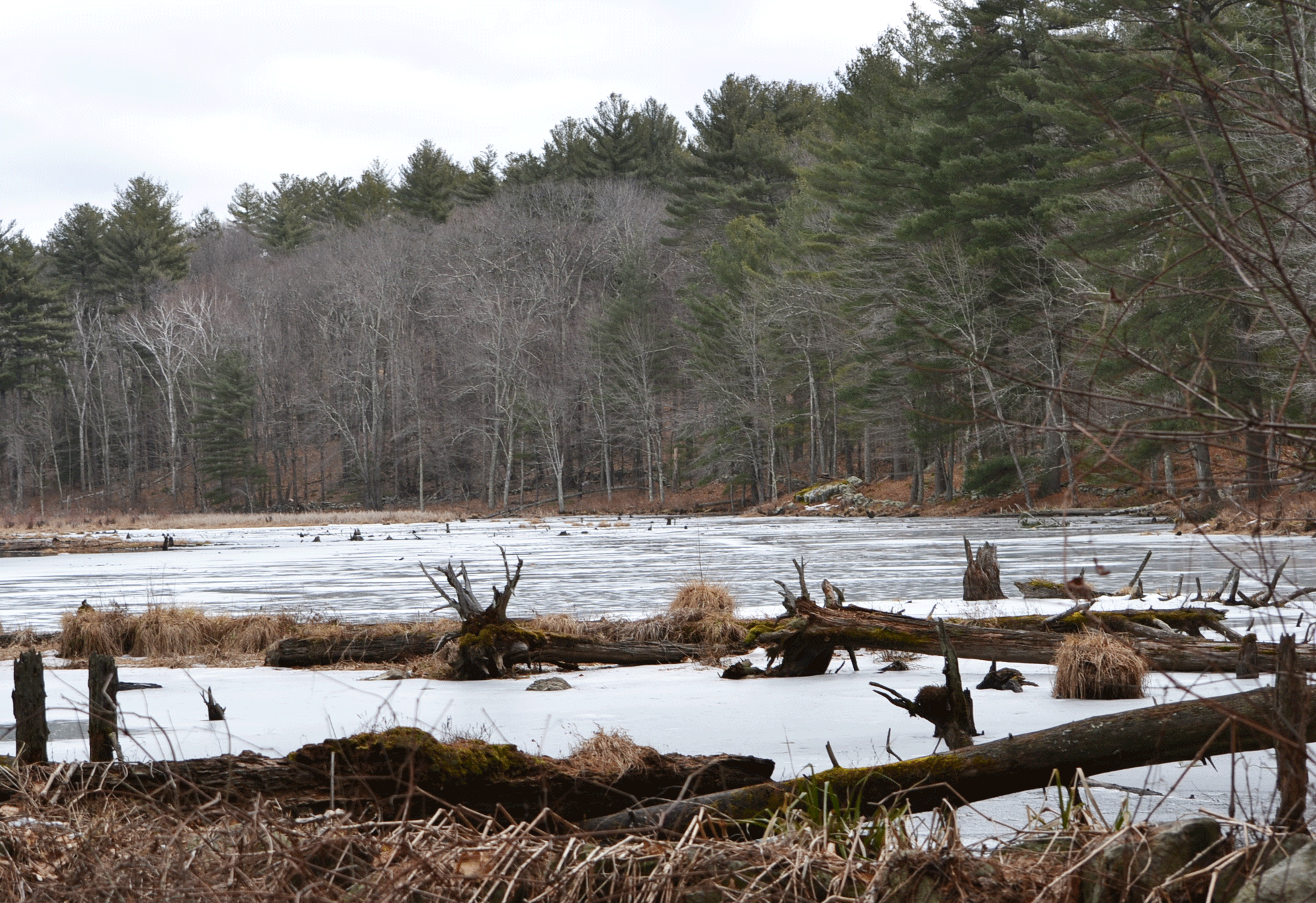
Pond created by beavers blocking culvert in old road.
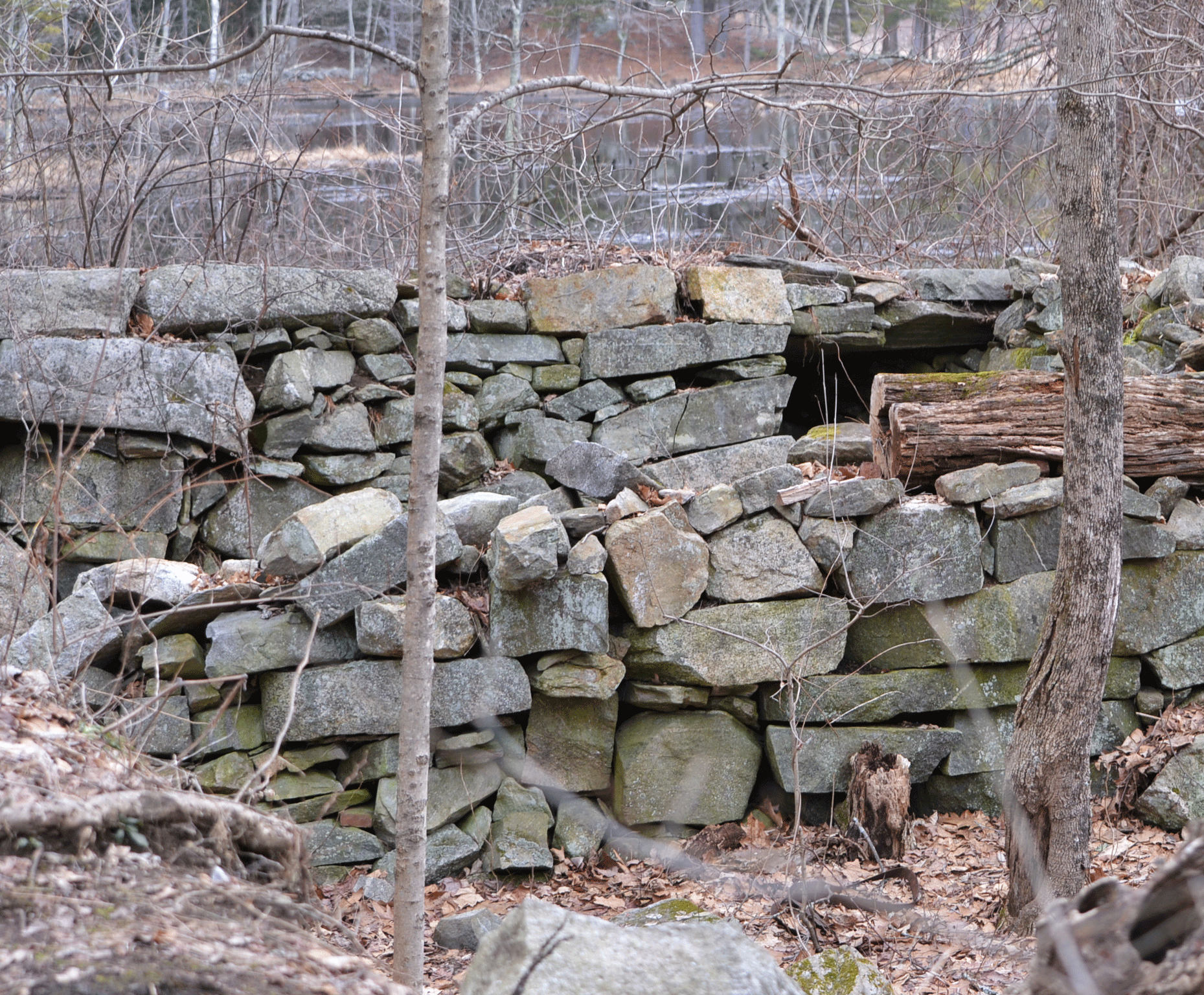
Old foundation of house on Spaulding Hill Road.
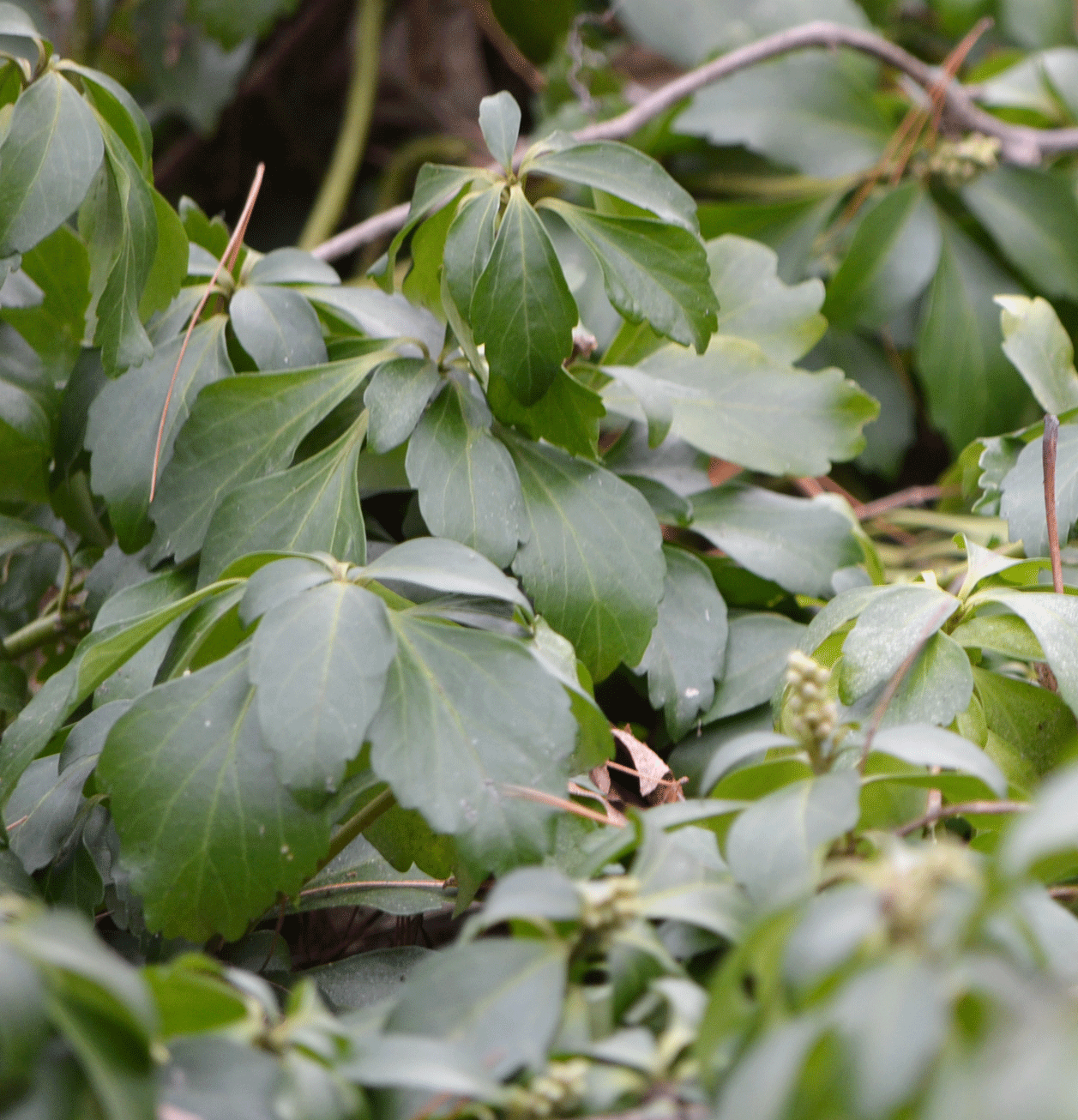
Japanese Pachysandra is an imported ornamental plant; it is growing around an old house foundation.

Stone walls line each side of the old Spaulding Hill Road.
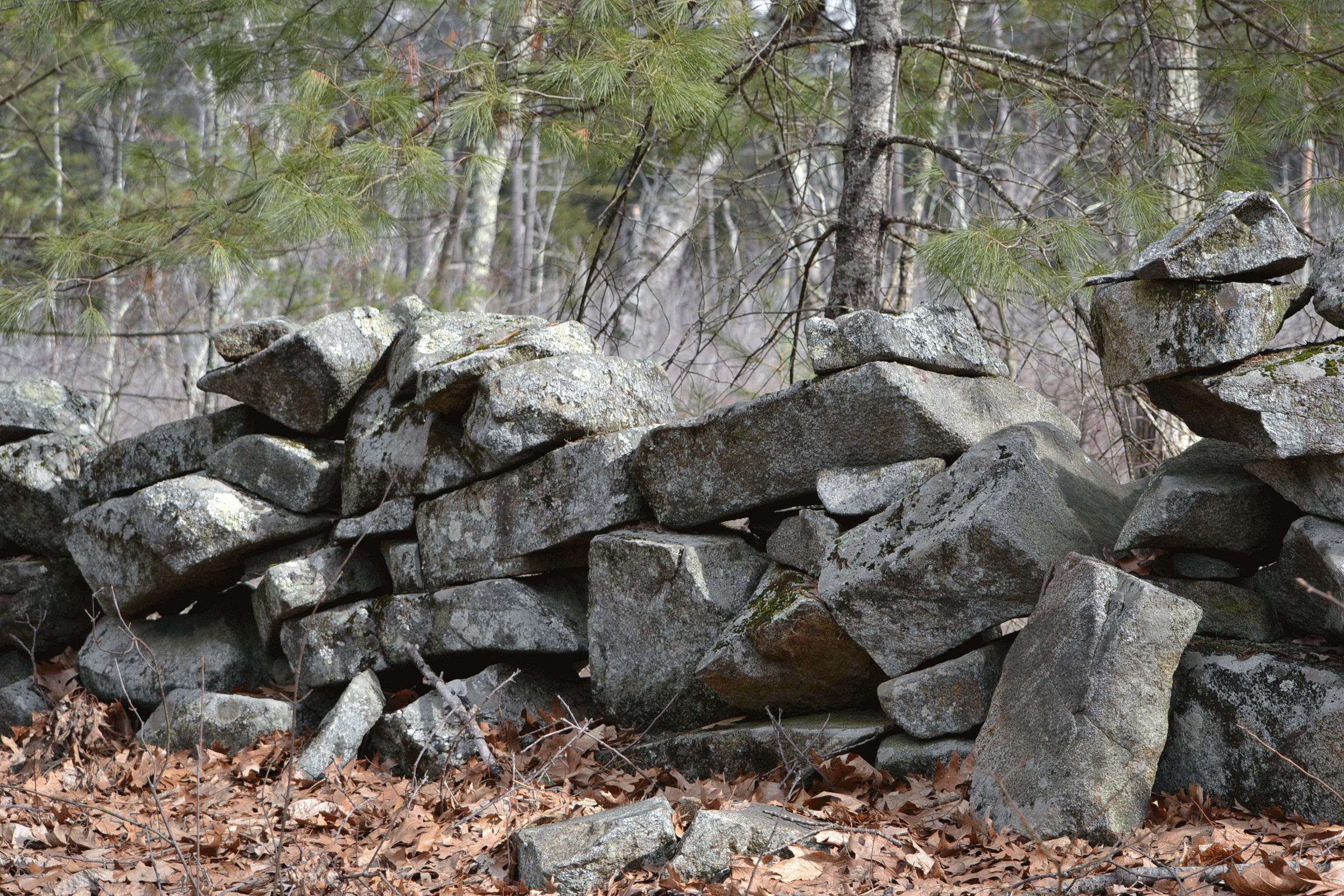
One of many stone walls that could be an old boundary line, edge of agriculture field or animal pen.
February Walk Merriam Farm Conservation Area
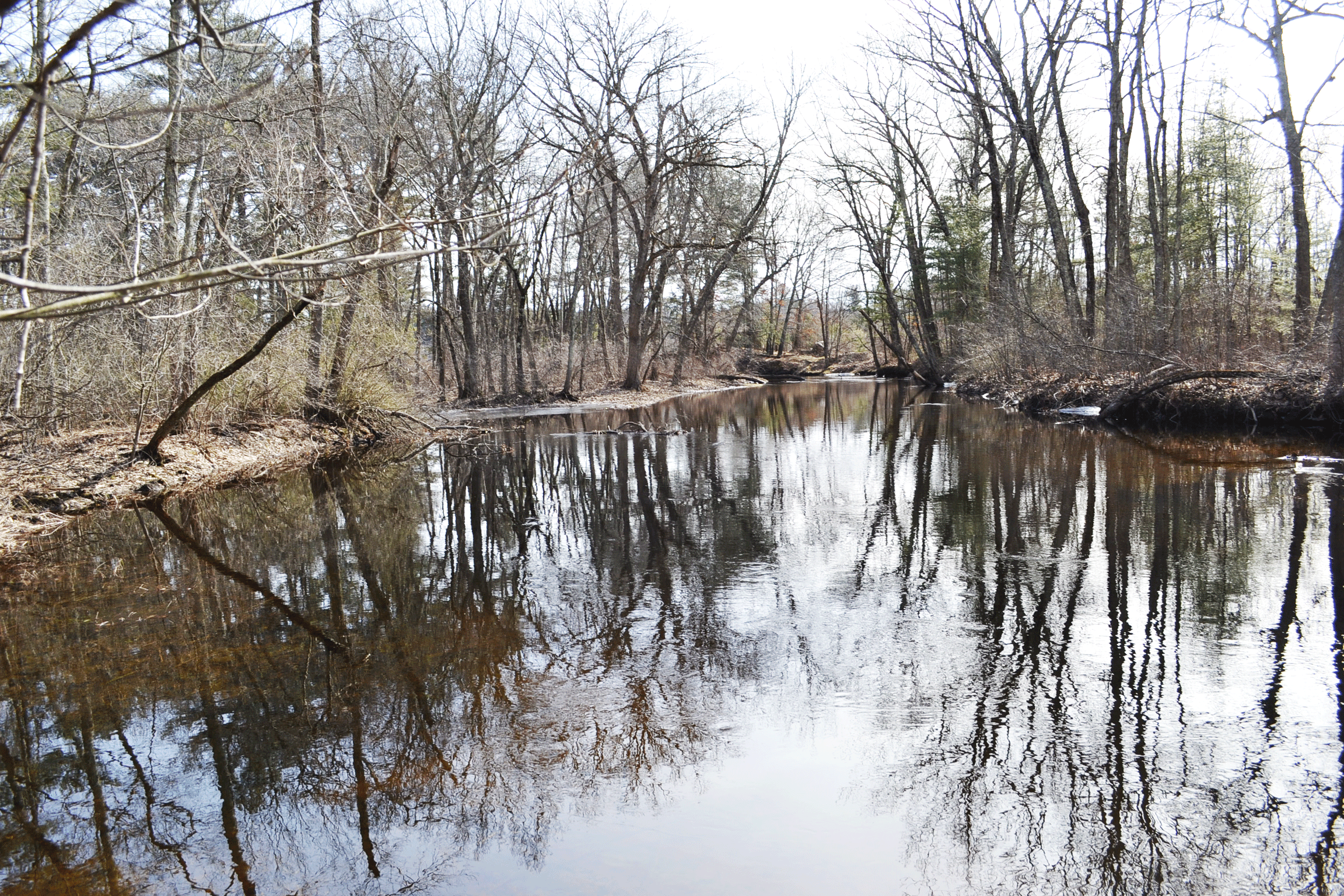
Beaver Brook is flowing.

Bluebird sitting on branch.

Forested wetlands are areas that are saturated with water and where trees also grow.

Bluebird nesting boxes ready for spring.